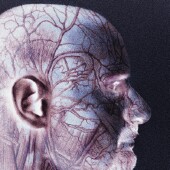
THURSDAY, Feb. 27, 2014 (HealthDay News) — One-third of people who suffer strokes before the age of 50 will have trouble dealing with the challenges of daily life even several years later, a new study finds.
The finding suggests that younger age provides only limited protection against the devastation of a stroke.
While strokes are much rarer in younger people, 10 percent of all strokes occur from age 18 to 50, the study authors noted.
Dr. Steven Levine, an attending neurologist at The Brooklyn Hospital Center in New York City, agreed.
“Stroke in young people is more common than most people realize,” he said. “Approximately 15 percent of all strokes due to blocked arteries [called ischemic strokes] occur in young adults and adolescents.”
Levine, who was not involved in the new study, added that stroke can often have a devastating effect on the lives of younger patients.
“Compared to stroke in older people, stroke in the young has significant economic impact by leaving victims disabled prior to their most productive years,” he pointed out.
The new Dutch study was led by Frank-Erik de Leeuw, associate professor of neurology at the Radboud University Nijmegen Medical Center. His team tracked the progress of 722 people who first had a stroke at ages 18 to 50.
After an average of nine years, about one in three still required assistance in some situations due to lingering disability that was at least at a moderate level. Some were unable to independently accomplish household chores and take care themselves, the study found.
Hemorrhagic strokes, which occur when there’s bleeding in the brain, resulted in the most disability, followed by ischemic strokes and the “mini-strokes” known as transient ischemic attacks.
Not surprisingly, having a second stroke often boosted the risk of disability, the team reported in the Feb. 27 issue of the journal Stroke.
“Even if patients seem relatively well recovered with respect to motor function, there may still be immense ‘invisible’ damage that leads to loss of independence,” de Leeuw said in a journal news release.
“Most doctors view young stroke patients as a group with great recovery opportunities,” de Leeuw said. “But our study is the first to show these almost life-long effects of stroke on performance. This is important to communicate right from the start to patients and families.”
Levine said there are resources available to help younger patients deal with the aftermath of stroke.
“Rehabilitation is very important with an emphasis on early treatment,” he said. “Prevention of a second stroke is also critical, which is why young stroke survivors should be evaluated by stroke specialists to determine and treat the cause.”
Expectations need to be realistic as well, Levine noted.
“Just because someone is young when they have a stroke, that doesn’t necessarily mean they will have good recovery; in fact, only about half of young stroke survivors return to work,” Levine said. “Of those, approximately one in four require adjustments in their occupation.”
Dr. Aviva Lubin is associate stroke director at Lenox Hill Hospital in New York City. She said the Dutch study “highlights the potential long-term disability after stroke.”
However, “stroke care has made strides in the past two decades, as shown in the decreasing proportion of patients with poor functional outcome over the time of the [Dutch] study,” she added. “Such improvement is probably due to intensive rehabilitation after stroke followed by continued exercise.”
And Levine pointed out that support is out there for stroke patients and their caregivers.
“There are many websites addressing young stroke victims, and social media networking can provide additional avenues for raising awareness and linking individuals and families,” Levine said.
More information
There’s more on stroke at the U.S. Centers for Disease Control and Prevention.
Copyright © 2025 HealthDay. All rights reserved.

